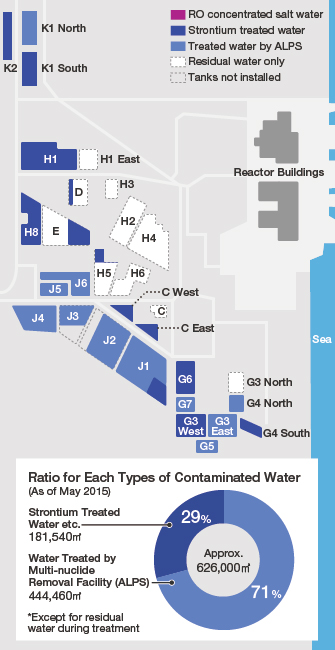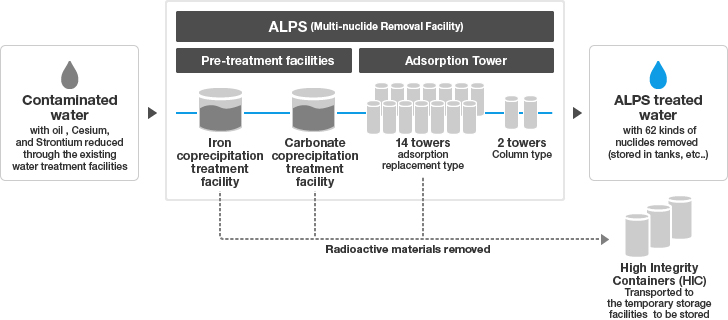Decommissioning Plan of Fukushima Daiichi Nuclear Power > Plan & Action > Major Initiatives for Water Management > Contaminated Water Treatment
Multiple facilities including Multi-nuclide Removal Facility (Advanced Liquid Processing System = ALPS) treat the contaminated water accumulated in Fukushima Daiichi Nuclear Power Station. After the concentration of Cesium and Strontium contained in the contaminated water is reduced, Multi-nuclide Removal Facility (ALPS) eventually removes most of the radioactive materials except Tritium. On May 27, 2015, the treatment of stored water except residual water in the bottom of the storage tanks was completed, which will help reduce the risks attributed to contaminated water, such as the increase in radiation dose on the premises or the contaminated water leaking from the storing tanks. The treated water from which Cesium and Strontium have been already reduced will require further treatment by ALPS to remove additional, less problematic, nuclides for further risk reduction.
Please click the tabs below to switch the maps.
The maps below show the transition of different types of water stored in each tank area. The tanks store either Reverse Osmosis (RO) concentrated salt water, treated water by multi-nuclide removal facility (ALPS), or Strontium treated water.
As of May 2015
Completion of Contaminated Water
Treatment Stored in Tanks


Multi-nuclide Removal Facility (ALPS) is introduced to improve the treatment capacity of contaminated water. It was difficult for the existing treatment facilities to remove radioactive materials except Cesium; however, Multi-nuclide Removal Facility can remove most of the radioactive materials except Tritium.

© Tokyo Electric Power Company Holdings, Inc.